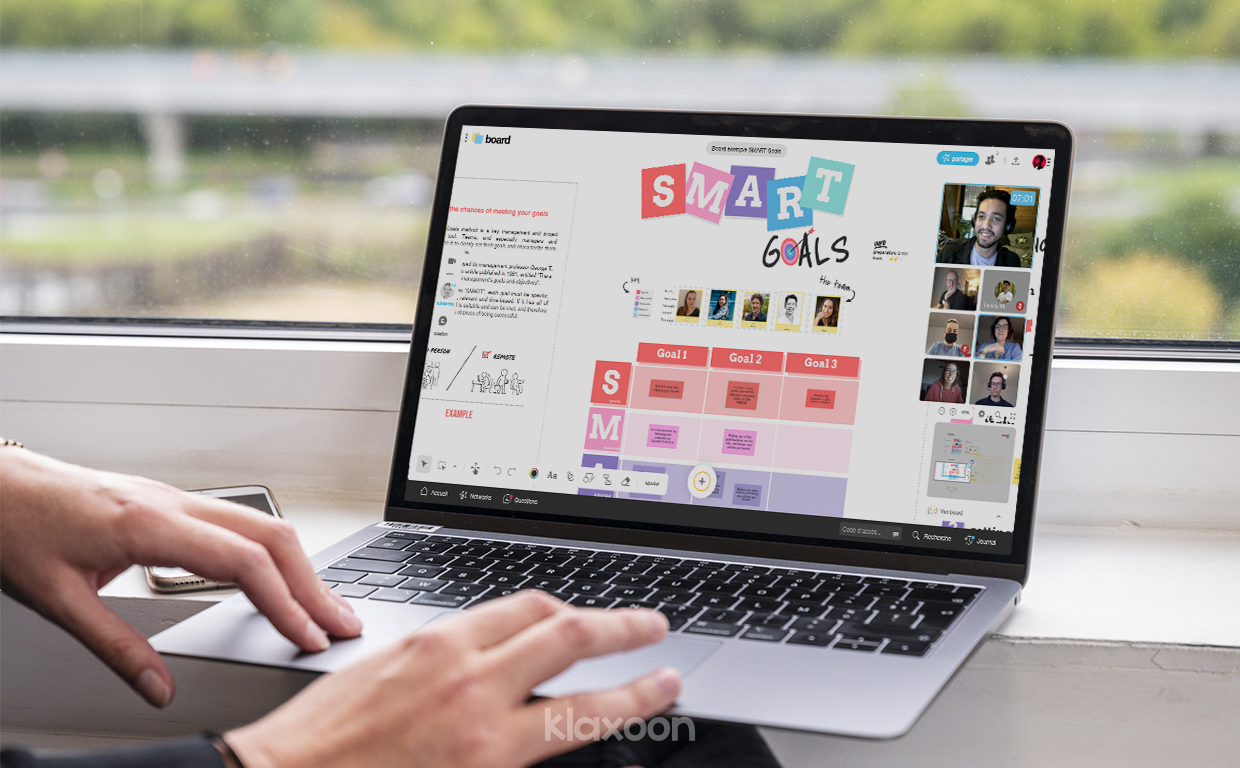SMART Goals: maximize the chances of making your projects successful
Published on February 14, 2025
SMART Goals: maximize the chances of making your projects successful


The SMART Goals method is a key management and project management tool. Teams, and especially managers and salespeople use it to clearly set their goals and characterize them according to 5 core criteria: a SMART goal, as the acronym suggests, must be Specific, Measurable, Achievable, Relevant and Time-based. If it has all of these attributes, the team will be able to meet it.
This methodology, widespread in management and project management, provides five core criteria that help you determine whether your goals are suitable and, therefore, easily achievable. The acronym “S.M.A.R.T” suggests that there is a smart and clever way of setting goals.
Without any goals, you’re shooting in the dark, and if your goals are not achievable, you’ll be going nowhere fast! This concept helps managers, salespeople and project managers to determine their goals, convert them into tasks to be completed with the aim of optimizing the chances of success of their ongoing projects.
The acronym was introduced in 1981 by management professor George T.Doran in an article entitled “There is a SMART way to write management’s goals and objectives”. The article explains that setting goals and planning how to set them out through a detailed action plan are pivotal stages.
Based on the acronym “S.M.A.R.T”, each letter represents a criterion that qualifies a goal. A goal must be Specific, Measurable, Achievable, Relevant and Time-based.


Using the SMART method has advantages. At the end of a workshop, the team is left with clear, to-the-point and approved goals to work toward. When managing teams, unity is the best way of successfully complete common projects. Providing the team with a well thought-out and structured message at the start of the project will generate unity and promote engagement.
These goals give your projects a solid foundation that will steer the action plan’s creation and implementation phases. You’ll then have a better insight into the human, material or financial resources you’ll need to run the execution phase and assign roles to your team members by sharing out the tasks to be completed.
This method is also a useful tracking tool: if you take the time to set your goals, you can then compare them against the results. Then comes a significant retrospective work phase, where you analyze the successes, and gain a clearer view of what went wrong.
Still having second thoughts about conducting this workshop? It’s a win-win situation: you’ll up the chances of making your projects successful as the teams will be more engaged and efficient, having clear, quantified and time-based goals to rely on. While setting goals is essential in management, doing it the smart way is vital!
Get your team to join Board, and together, go over the goals you have all listed, following the SMART criteria. Below are a few definitions to help you better understand what it’s all about:


Take advantage of Board’s interactivity. Engage the whole team and make sure that everyone’s on board with the shared information. For example, you can use Question to interact and ask feedback at any time. This whiteboard is first and foremost a highly visual tool, so feel free to schedule your goal presentation for all your teams.
Get inspired by other templates from the same categories
Unlock your teamwork potential